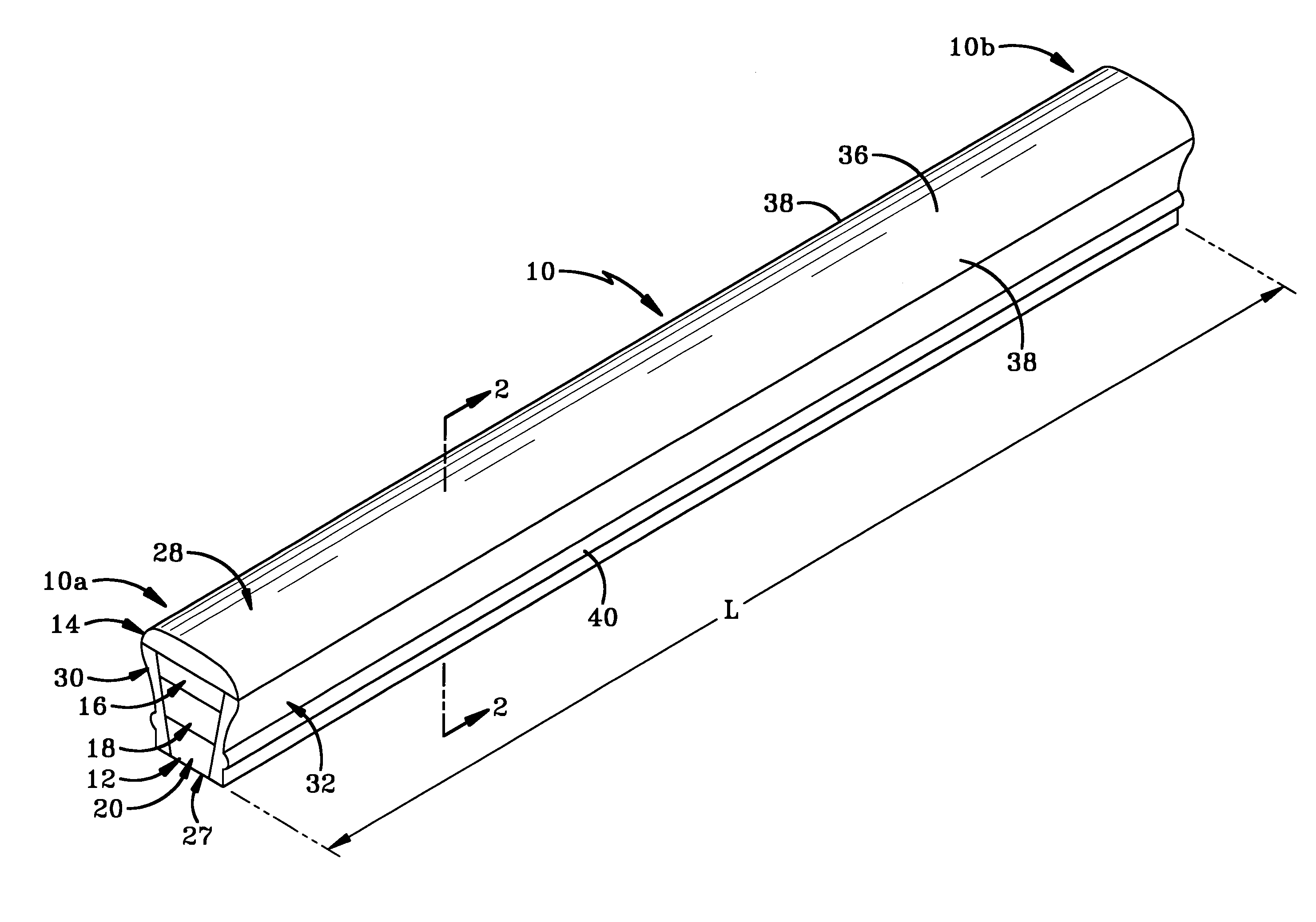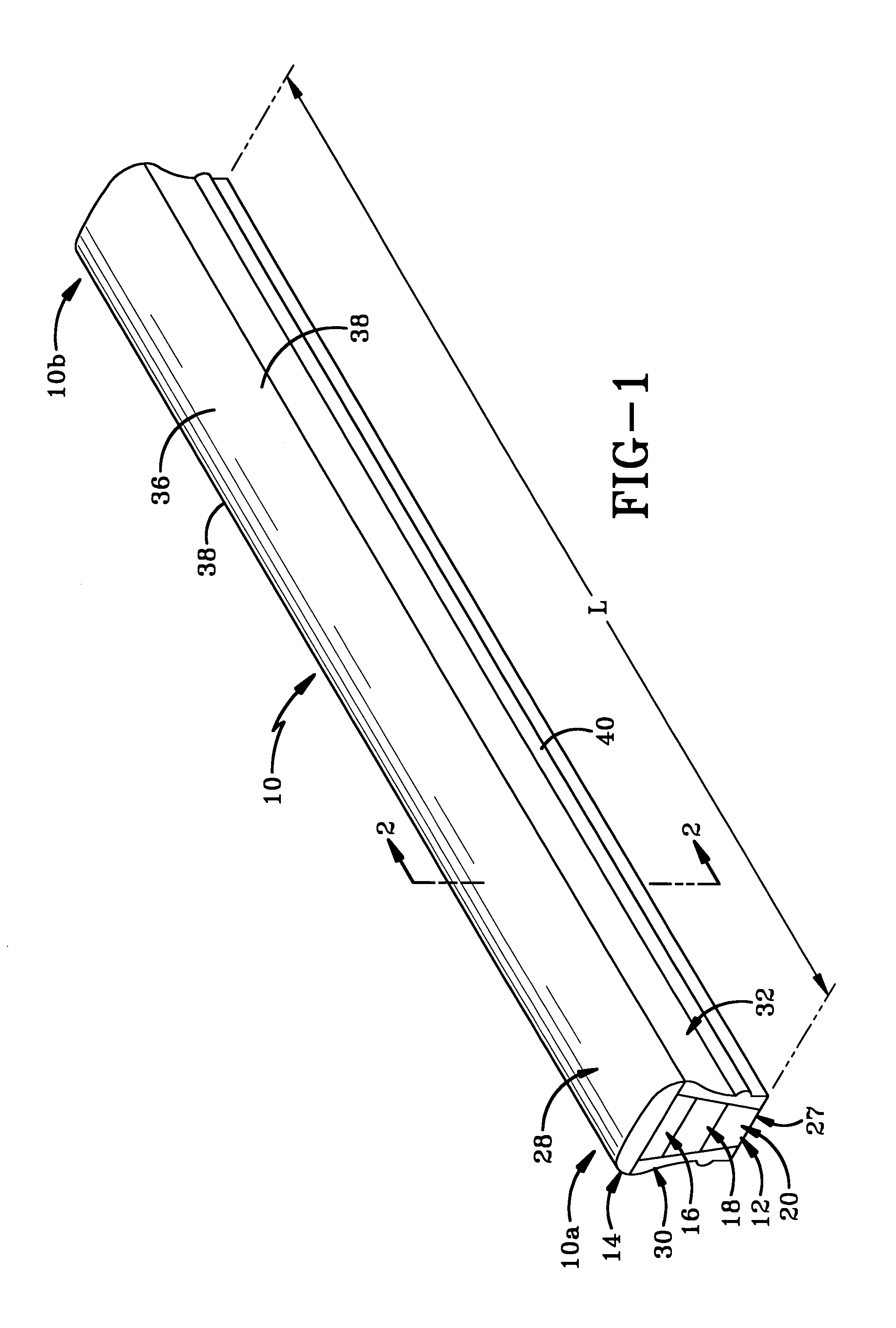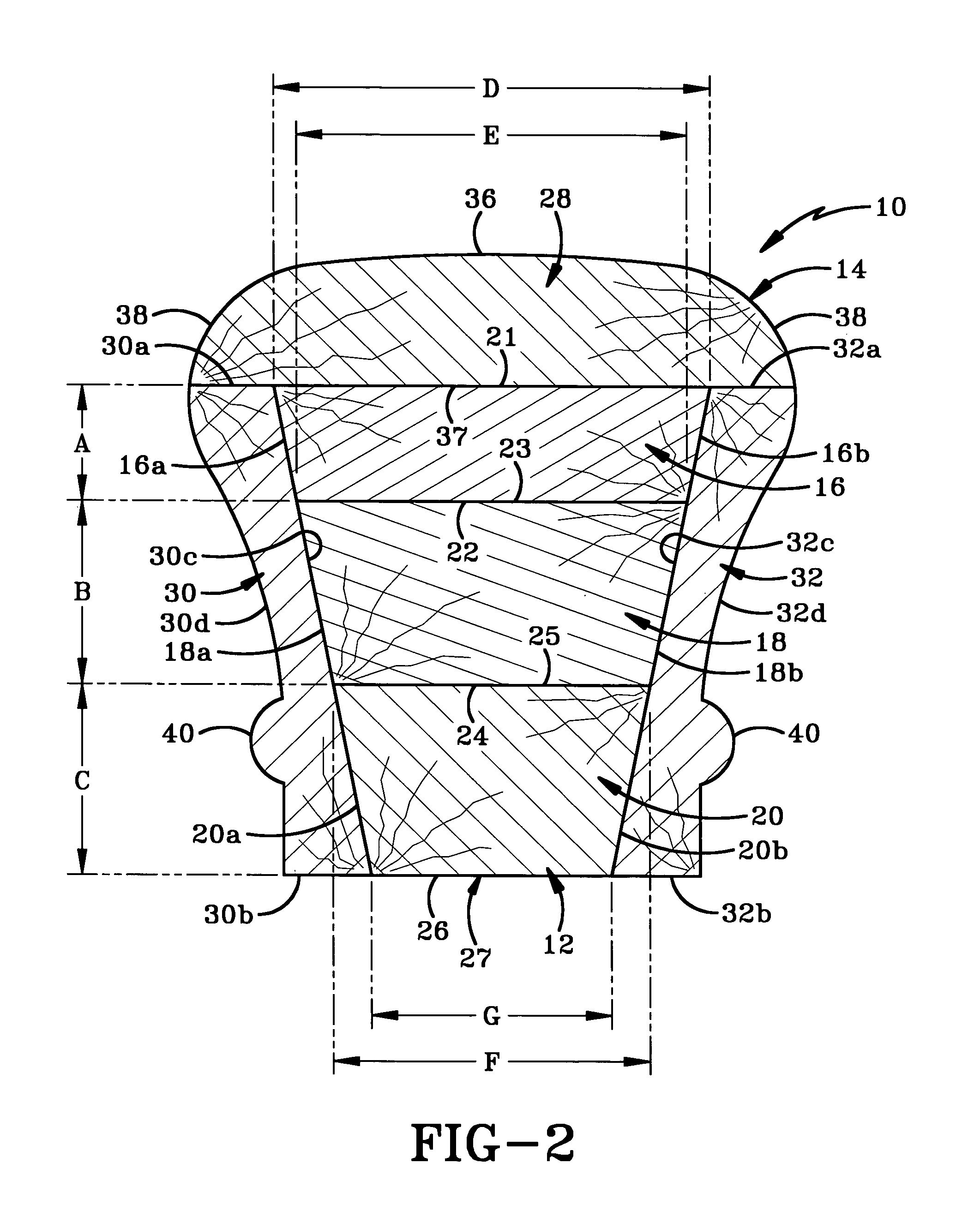Engineered handrail
- Summary
- Abstract
- Description
- Claims
- Application Information
AI Technical Summary
Benefits of technology
Problems solved by technology
Method used
Image
Examples
Embodiment Construction
[0020]Referring to FIGS. 1 and 2, there is shown an elongated handrail in accordance with the present invention and generally indicated at 10. Handrail 10 comprises an inner core, generally indicated at 12, and an outer region, generally indicated at 14. Handrail 10 has a first end 10a and a second end 10b and has a length “L” therebetween. FIG. 1 shows handrail 10 with the inner construction thereof being exposed. It will be understood, however, that the layered inner core 12 and outer region 14 would not be seen in a handrail mounted for use on a wall because the ends 10a, 10b would be finished off as part of outer region 14.
[0021]In accordance with one of the specific features of the present invention, inner core 12 comprises a plurality of layers of wood bonded together. As shown in FIG. 2, inner core 12 comprises three layers 16, 18 and 20. Layers 16 and 18 comprise elongated solid timber or boards of relatively inexpensive and lower grade woods of the same species. Layer 20, o...
PUM
 Login to View More
Login to View More Abstract
Description
Claims
Application Information
 Login to View More
Login to View More - R&D Engineer
- R&D Manager
- IP Professional
- Industry Leading Data Capabilities
- Powerful AI technology
- Patent DNA Extraction
Browse by: Latest US Patents, China's latest patents, Technical Efficacy Thesaurus, Application Domain, Technology Topic, Popular Technical Reports.
© 2024 PatSnap. All rights reserved.Legal|Privacy policy|Modern Slavery Act Transparency Statement|Sitemap|About US| Contact US: help@patsnap.com










